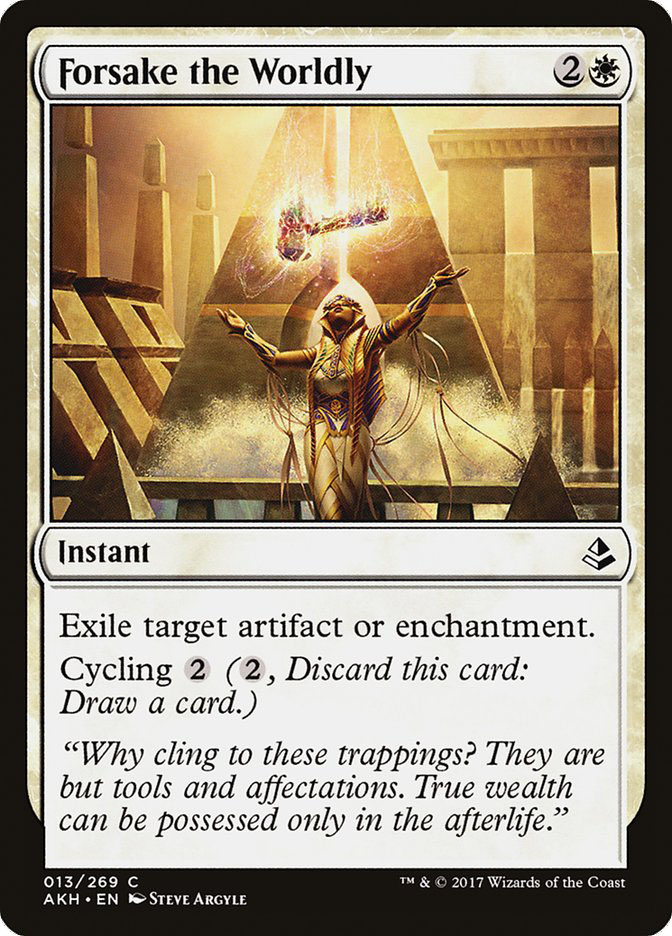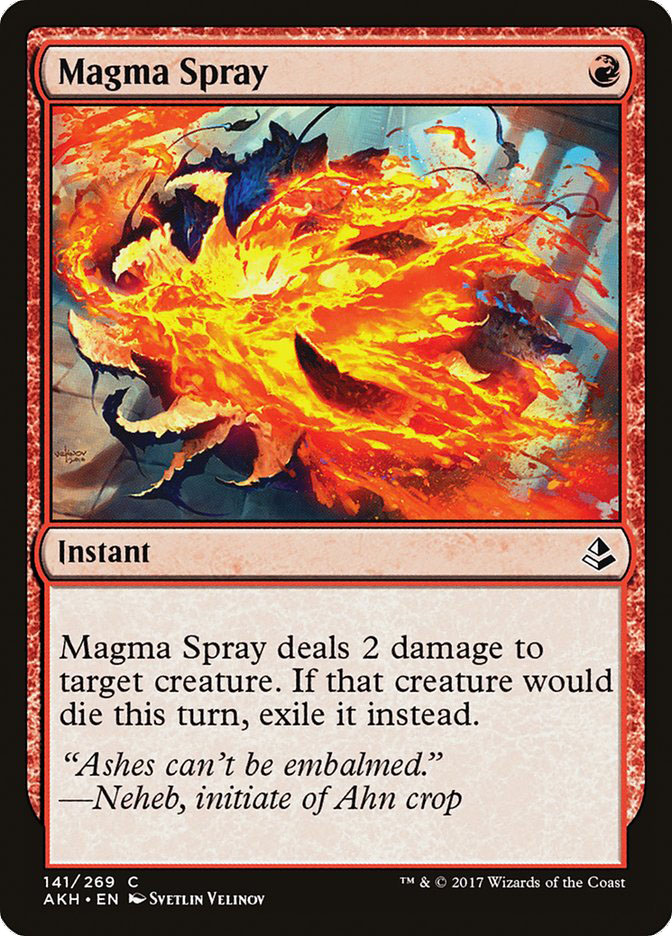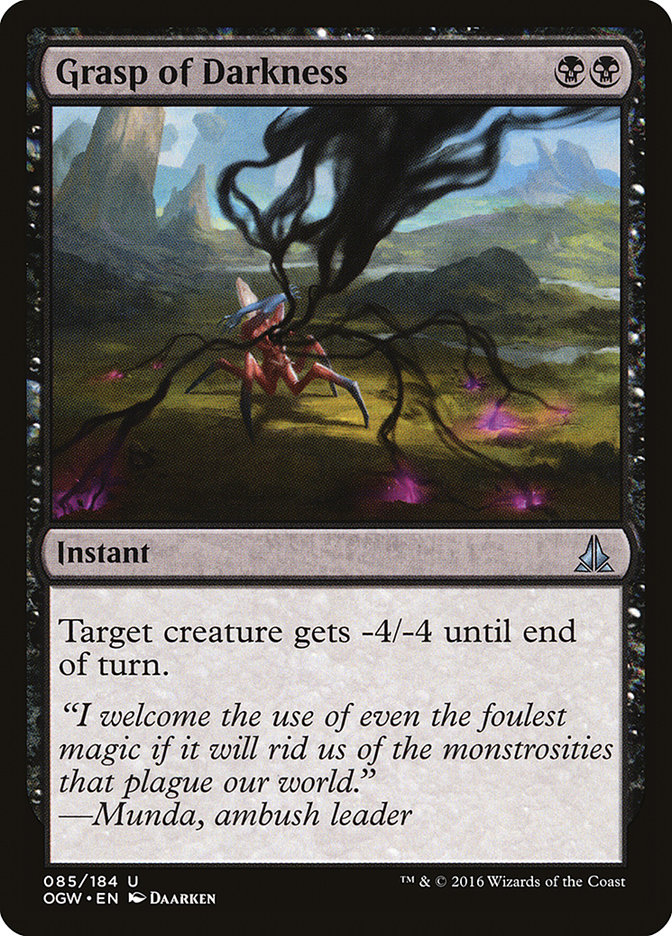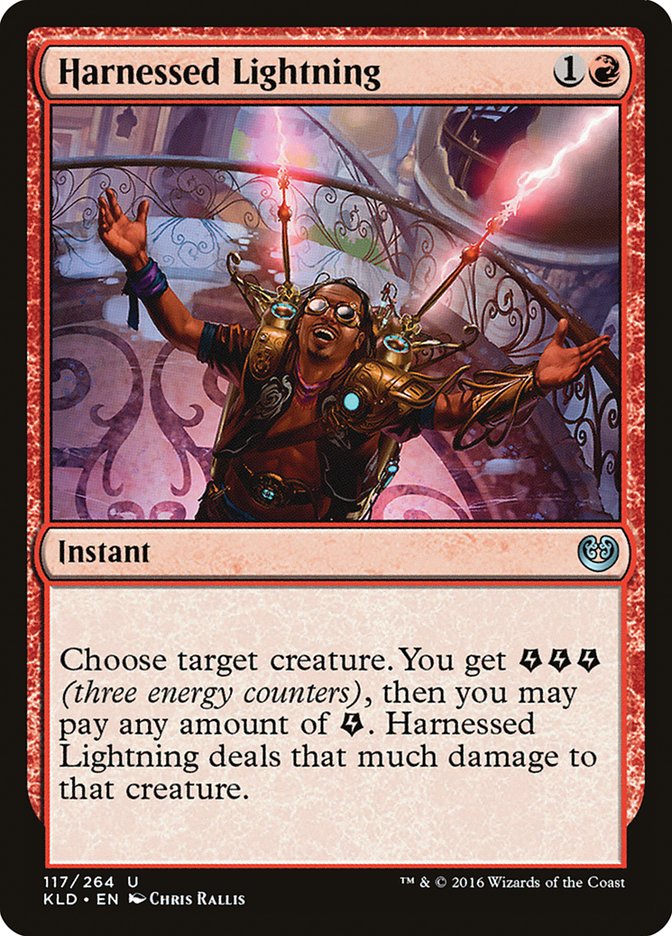At the risk of sounding like a broken record: It’s a great time to be
grinding people out with Torrential Gearhulk.
Going into the first week of this Standard format a few weeks ago with a
control deck was relatively daunting, and it’s easy to see why. People
always have all kinds of criticisms associated with sleeving up a bunch of
blue lands with card draw earlier in a format…
“Aggro always wins Week 1 Standard.”
”
Control just isn’t good earlier in the format; it has to know what it’s
beating.”
The former is a bit of adage in Magic at this point, but the latter doesn’t
seem to hold as much water without delving a bit deeper into what it
actually means. When you say “Control has to know what it’s
beating,” what does that translate to?
Wizards of the Coast has been working harder and harder to make cheaper
answers less generic and more pointed towards specific kinds of threats,
rather than having cards that are as efficient and broad as the answers of
yesteryear:
Then:

Now:

Naturally, cards in the second group can be better than cards in the first
group in specific situations, but the fact of the matter is, the cards in
the first group are going to be useful more often than the cards in the
second.
Control decks today tend to be a handful of cards that ‘just good.’ Role.
Fillers.
Defining Role Fillers
Look at the 71 cards I’m playing with my Torrential Gearhulks this week:
Creatures (4)
Lands (27)
Spells (29)

Everything in this deck is either doing something that’s universally good,
or it’s fulfilling a specific role.

All of these cards are doing something relatively generic or something that
is going to be good every single game. Drawing cards and filtering the bad
ones out with Glimmer of Genius is the backbone of the deck; Torrential
Gearhulk is the kill condition; Void Shatter is the primary counterspell in
the deck; Harnessed Lightning is the best removal spell in Standard.
All of these things are doing more than playing a single role: They’re
defining the archetype.
Role fillers are going to be the more specific cards in the archetype.
That’s to say, cards that are there because the archetype needs something
specific: something that a single card can provide.
Forsake the Worldly is an example of a card that is there to do one of a
few specific things. It’s a low-cost hedge against some of the more
difficult to answer permanents that one can expect to face in Standard:

Forsake the Worldly is serving a specific role. Jeskai Control needs cards
that are able to answer these kinds of threats. The way to do it doesn’t
have to be as specific as Forsake the Worldly (there are copies of Cast Out
in the deck, after all), but the subtle shifts in Forsake the Worldly help
in compensate for other things that the deck needs to be doing on a
consistent basis.
Understanding When Role Fillers are Required
Going into any Constructed format, there’s going to be some sort of litmus
test. A rite of passage that effectively says “In order for a deck to be
able to compete, it needs to have a reasonable plan against X, Y, and Z.”
Role fillers are effectively the cards that fill in the cracks and check
the proverbial boxes that would otherwise be left unchecked by an
archetype. From the perspective of a control deck in today’s Standard
format, it isn’t optional to be able to do all of the following things:
-Have a reliable answer to Scrapheap Scrounger
-Reliably counter Gideon, Ally of Zendikar
-Don’t fold to Thalia’s Lieutenant
-Answer medium-to-large sized creatures from Winding Constrictor decks
-Have a plan against Aetherworks Marvel
-Have game against blue control decks
That’s a lot of different things to answer.
Some of these things are going to be relatively incidental in the way the
deck tends to posture itself. Answering medium-sized threats from Winding
Constrictor decks is kind of the bread and butter of Torrential Gearhulk
decks.
Crossing everything off of the previously mentioned list isn’t always going
to look quite as elegant as one would prefer. There’s a reason that the
Jeskai list doesn’t look this clean.
Creatures (4)
Planeswalkers (1)
Lands (27)
Spells (28)

At a glance, this deck seems like it can answer everything, eventually.
Curve concerns aside, this deck lacks the ability to effectively combat
many of the aspects required of a deck in order for it to succeed.
When the de facto ‘best deck’ in the format is playing both Scrapheap
Scrounger and Gideon, Ally of Zendikar, crossing one’s fingers and praying
that Cast Out always shows up at the right time isn’t a remotely reasonable
strategy. The four copies of a four-drop aren’t always going to be there or
even be good enough when they do. Exiling a Scrapheap Scrounger that’s
already been on the battlefield for two or three turns is going to result
in a net loss of six to nine life. That isn’t acceptable.
For that reason, playing Magma Spray in the deck is going to be something
that both assists with the Scrapheap Scrounger problem, and the Thalia’s
Lieutenant problem. Adding Magma Spray over some of the other cards in the
deck is going to lead to a list that is more mana-efficient and acts as a
more permanent solution.
Revisiting Forsake the Worldly’s inclusion in the deck, it becomes more
evident why it is included in both the main deck and sideboard of my
current list.
These types of role fillers have a tendency to find themselves relegated to
the sideboard, only getting time off the bench during games 2 and 3. This
is primarily due to their pointed nature being the tradeoff for their
efficiency. There are two types of scenarios when these types of cards can
justify occupying main deck slots: when a format becomes so inbred that
there is an incredibly high chance of playing against a specific type of
card, or when the card has a reasonably-costed alternative effect.
The card’s ability to answer Scrapheap Scrounger (for less mana than Cast
Out), get a copy of Aetherworks Marvel off the table, or deal with the two
most
popular blue
kill-conditions
puts it on a level slightly higher than “cute answer to play for flair
points.” A majority of decks have some sort of artifact or
enchantment in their deck that can be exiled. Not quite enough for Forsake
the Worldly sans-cycling to see main deck play.
Amonkhet
returning cycling to the forefront of Magic couples the not-so narrow
upside of playing a main deck Disenchant effect with the wonderful
alternate effect “(2): Turn this card into something else.”
Neither effect is generally going to be something worth overloading on, but
having them both lumped into a single card is worth the attention it’s been
given here.
Card Advantage with Role Fulfillment
Not all role fillers are going to be answering a specific card. Some cards
are meant to just be the best card for the job in that they do the most
things possible that already contribute to the overarching strategy of the
deck while providing a very specific thing.
It’s no accident that Archangel Avacyn is in the sideboard despite her
rarely being more than a Serra Angel with flash. It’s all the deck wants.
One issue with the Jeskai Control deck can be finishing three games in a
sanctioned tournament. With only seven total cards that can deal damage to
the opponent in the main deck, it can take awhile to close game 1. On the
same issue: The deck can be quite good at not-dying without actually
winning a game. That’s to say the deck can survive at a low life total for
a very long time before inevitably succumbing to some sort of sticky threat
or drawing a few too many lands.
This issue leads to the deck needing a relatively efficient way to close a
game that meshes well with what the deck is already trying to do.
The best way to close a game in Jeskai colors is going to be Gideon, Ally
of Zendikar.
This begs the question: Is Gideon, Ally of Zendikar something that this
deck wants to play?
Last week
I referenced the Jeskai list I began with when testing for #SCGATL
that included a few copies of Gideon, Ally of Zendikar in the sideboard.
After a few games with it I noticed a couple of issues:
-Gideon was only really good when already at-parity or better on the
battlefield. Because of Jeskai’s low number of permanents, it’s hard to
maintain a presence on the battlefield.
-There’s a real cost associated with tapping out for Gideon. While the
shields are down for Gideon, Ally of Zendikar, something is going to
resolve, and some things can be a bigger issue than others. Destroying a
creature isn’t too hard, but dealing with an Aetherworks Marvel, or
Liliana, Death’s Majesty isn’t going to be so easy.
–Gideon, Ally of Zendikar’s Glorious Anthem isn’t nearly as meaningful as
it is in other strategies.
”
Emma, if you want to close matches faster, why not play more threats in
the main deck?”
Because one of the strengths of this archetype is the deck’s ability to
blank removal.
That’s probably not doing much.
Unless you several-cards-for-one yourself, Grasp of Darkness isn’t going to
do anything meaningful.
You’re getting warmer. Without a lot of energy, this isn’t quite going to
do the trick.
Leaving in a bunch of removal against the Glimmer of Genius/Torrential
Gearhulk deck is a losing strategy. After sideboarding, many of these
removal spells are going to be taken out of the deck for more high-impact
threats. This makes a spread of different threats more effective in
post-sideboard games than it would be in pre-sideboard. Reducing the number
of slots in the main deck that threats occupy also allows the deck to be
prepared for a wider array of archetypes with a broader spread of answers.
Something else became apparent throughout playtesting with Archangel
Avacyn: She’s a proper Planeswalker slayer. Even discounting what
she can do in the lore
, Avacyn’s evasion and the lack of removal spells that cleanly answer her
make her one of the most effective ways to deal with the hardest permanent
for Jeskai to cleanly deal with.
All of these things being wrapped into a single package make Avacyn worth
several cards in a different way than Magic players are normally taught to
think. Generally speaking, when people think of card advantage, they think
of exchanges that net cards in the context of a game of Magic.
Cards like Archangel Avacyn provide card advantage in deck construction.
Outside of some
special cases
, the best Magic decks are going to include 60 cards in the main deck and
15 cards in the sideboard. Filling every single role that a deckbuilder
wants is going to have to be accomplished in those 75 slots (many of which
are for lands). Cards like Archangel Avacyn that are planeswalker-killing,
offensive and defensive, and have flash tend to be worth more than a single
card when actually fitting all of the necessary cards in a single decklist.
Applying Role Fillers in Your Deckbuilding
Not every deck is going to play a smattering of one-ofs and justify it as a
bunch of different role fillers. Decks with large quantities of card
selection are generally going to be able to play the most individual role
fillers, but one of the primary goals in sideboarding is finding cards that
play individual roles in certain matchups.
Magic’s a game with 17,000 unique cards. There’s something out
there that can help you. It’s all about understanding what it is you want.









